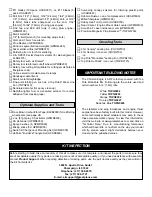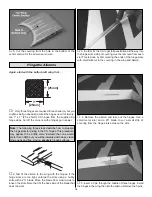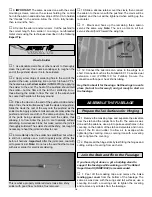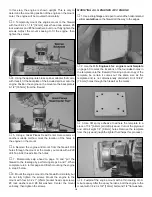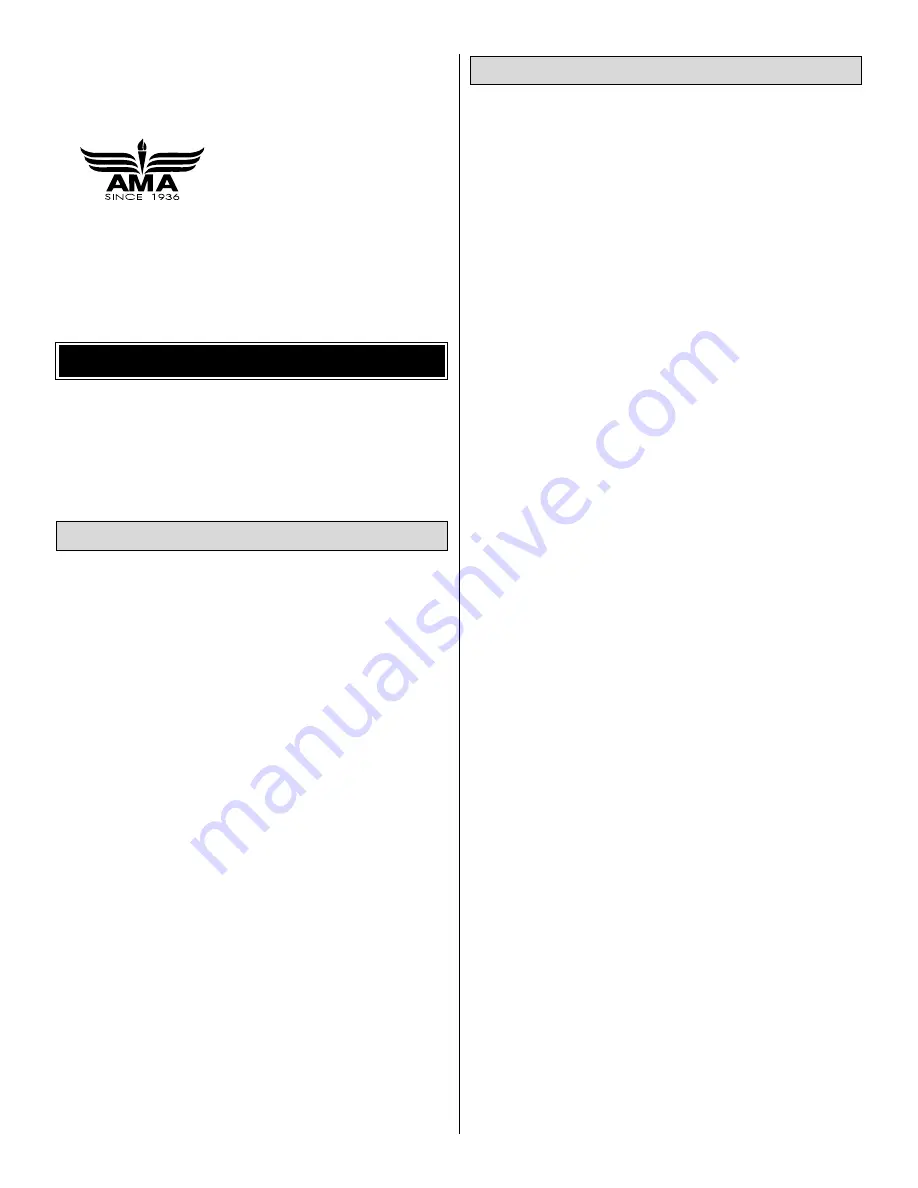
instructors. To join the AMA, telephone, write or fax them at
the address below, or join on line at www.modelaircraft.org.
Academy of Model Aeronautics
5151 East Memorial Drive
Muncie, IN 47302-9252
Tele. (800) 435-9262
Fax (765) 741-0057
Or via the Internet at:
http://www.modelaircraft.org
This is a partial list of items required to finish the Great
Planes Christen Eagle II ARF that may require planning or
decision making before starting to build. Order numbers are
provided in parentheses.
Technically, the Christen Eagle is a giant-scale model, but
it's not really THAT large! Expensive, high-torque servos
aren't necessary to fly this model, but “standard” servos
should not be used either. Servos with a torque rating of at
least 50 oz-in [3.9 kg-cm] should be used on the ailerons,
elevator and rudder. If you plan on doing lots of aerobatic
flying where the rudder will be used heavily, you might
consider using an even higher torque servo for the rudder.
Of course, a standard servo may be used on the throttle.
Because the elevator servos move in opposition, either a
transmitter capable of electronic mixing must be used (so one
of the servos can be reversed); or use a separate, in-line
servo mixing device such as the Futaba
®
SR-10 Synchronized
Servo Reverser (FUTM4150) to reverse one of the servos.
A receiver battery pack with a capacity of no less than 1,000
mAh is also recommended.
The following servo extension cords and connectors were
also used to build this model:
❏
(2) Short Y-connectors such as the Futaba AEC-13 Dual
Servo Extension for Futaba radios for the ailerons in the
wings (FUTM4130).
❏
(1) 24" [610mm] Y-harness for connecting Y-connectors in
wings to the receiver (HCAM2500 for Futaba, HCAM2530
for JR
®
/Airtronics
®
Z/Hitec
®
).
❏
(7) 12" [300mm] servo extension for ailerons, rudder and
elevator servos (HCAM2100 for Futaba, HCAM2130 for
JR/Airtronics Z/Hitec).
Note: Instructions for mounting every possible engine
cannot be incorporated into this manual. Although there are
several engines suitable for powering the Christen Eagle
ARF, instructions are provided for mounting a Fuji
™
Engines
50SB spark-ignition engine, a U.S. Engines
™
41cc engine
and an O.S.
®
MAX 1.60 FX glow engine. Modelers using
different engines may refer to the instructions as a guide.
The recommended engine size range for the Eagle is
specified on the cover of this manual. All engines within the
specified range will power the Eagle well. At no time should
an engine larger than the recommended range be flown on
this model because it has not been tested for such use.
Powered by a two-stroke glow engine such as the O.S. MAX
1.60 FX, the Eagle is able to perform aerobatics and has been
said to fly quite “scale-like.” The Eagle also flies extremely well
with the O.S. MAX FT-300 four-stroke twin. With this engine,
the Eagle's vertical performance is virtually unlimited and it is
capable of hovering. Additionally, powered by the FT-300, the
Eagle has a pleasing, scale-like sound. Powered by the Fuji
BT-50 gas engine, the Eagle was very aerobatic and perfectly
able to handle the additional weight with no bad tendencies.
The Fuji BT-50 is an ideal gas power plant for the Eagle. It is
perfectly concealed within the cowl without having to cut
unsightly holes for the muffler, spark plug or engine head.
When making the decision between a gas engine and a
glow engine, while a gas engine may provide more power,
the additional weight of a gas engine can offset some of the
power advantage. However, the considerably lower cost of
gasoline compared to glow fuel should also be taken into
consideration when choosing a power plant for your Eagle.
If using the Fuji BT-50SB engine the Fuji Engines Short
Propeller Hub (FJIG6754) and (4) 1/4-20 x 1" [25mm] socket
head cap screws and lock washers for mounting the engine
will be required (1/4-20 blind nuts are included with the kit).
If mounting a different gas engine, different hardware may
be required.
If using the U.S. Engines 41cc, a 1/4" x 3-3/4" x 4-1/2" [6.4
x 100 x 115mm] sheet of aircraft plywood will be required for
making the engine mount plate. There is a template on page
50 of the manual
If using a two-stroke glow engine, a Bisson brand Pitts-style
muffler is recommended:
❏
BISG1180 for the Moki 2.10
❏
BISG4116 for the O.S. 1.60 FX
❏
BISG4220 for the O.S. BGX 3500
❏
BISG2300 for the SuperTigre
®
3000 or 3250
Per the IMAA Safety Code, magneto spark-ignition engines
must have a coil-grounding switch on the aircraft to stop the
engine and prevent accidental starting. The switch must be
operated manually (without the use of the transmitter) and
accessible by the pilot and assistant. For use with the Fuji
Engine Recommendations
Radio Equipment
DECISIONS YOU MUST MAKE
4






